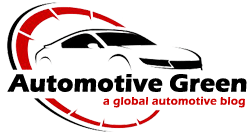
Traffic congestion is an everyday reality for millions of UK drivers. As urban areas grow and more vehicles hit the roads, the impact of traffic on cars and their owners becomes increasingly significant. Beyond the frustration and wasted time, traffic congestion has tangible effects on vehicles, from increased wear and tear to higher maintenance costs. This blog explores how UK traffic affects cars and drivers, highlighting the economic, environmental, and personal implications.
Table of Contents
The State of Traffic in the UK
Traffic congestion in the UK is a persistent problem, particularly in major cities like London, Birmingham, and Manchester. According to recent studies, UK drivers spend an average of 115 hours a year stuck in traffic, with Londoners facing the worst congestion. Factors contributing to this gridlock include an ever-increasing number of vehicles, roadworks, accidents, and inadequate infrastructure.
Economic Costs of Traffic Congestion
Traffic congestion costs the UK economy billions of pounds annually. These costs arise from lost productivity, increased fuel consumption, and delays in goods transportation. For individual drivers, time spent in traffic translates to higher fuel expenses and lost opportunities for productive activities.
How Traffic Affects Cars
Increased Wear and Tear
One of the most significant impacts of traffic congestion on cars is the increased wear and tear on various components. Frequent stop-and-go driving puts extra strain on the engine, transmission, brakes, and tires. Here’s how:
Engine and Transmission: Constant idling and frequent acceleration and deceleration can overheat the engine and put additional stress on the transmission. This can lead to more frequent oil changes and potential long-term damage if not properly maintained.
Brakes: Stop-and-go traffic means that brakes are used more intensively, leading to faster wear on brake pads and discs. This not only increases maintenance costs but can also compromise safety if brakes are not in optimal condition.
Tires: Continuous stopping and starting cause tires to wear unevenly, reducing their lifespan. Drivers may find themselves needing to replace tires more frequently, adding to the overall cost of vehicle ownership.
Fuel Efficiency and Emissions
Traffic congestion significantly affects fuel efficiency. Vehicles idling in traffic burn fuel without covering any distance, leading to lower miles per gallon (MPG). This increased fuel consumption has several implications:
Higher Fuel Costs: Drivers spend more on fuel, which can add up to substantial amounts over time. This is particularly burdensome given the fluctuating prices of petrol and diesel.
Environmental Impact: Increased fuel consumption leads to higher emissions of greenhouse gases and pollutants. Traffic congestion is a major contributor to urban air pollution, which has serious health implications for residents.
Increased Maintenance Costs
The combined effects of increased wear and tear and lower fuel efficiency mean that traffic congestion leads to higher maintenance and repair costs. Regular servicing becomes more critical to ensure that vehicles remain in good working condition. For example:
More Frequent Oil Changes: The engine oil degrades faster in congested conditions, necessitating more frequent oil changes.
Brake and Tire Replacements: As mentioned earlier, brakes and tires wear out more quickly, leading to more frequent replacements.
Transmission and Engine Repairs: Over time, the stress on these components can lead to significant repair costs, which are often higher than routine maintenance expenses.
Personal and Environmental Impacts
Stress and Health Issues
Traffic congestion also takes a toll on drivers’ mental and physical health. The frustration of being stuck in traffic can lead to increased stress levels, which in turn can cause various health problems such as hypertension and anxiety. Long commutes can also contribute to a sedentary lifestyle, increasing the risk of cardiovascular diseases.
Environmental Degradation
The environmental impact of traffic congestion extends beyond increased emissions. Idling cars contribute to poor air quality, which affects urban areas the most. The increased pollution from vehicles stuck in traffic can lead to respiratory issues, particularly in children and the elderly.
Solutions and Mitigation Strategies
Improving Public Transport
One of the most effective ways to reduce traffic congestion is to improve public transportation. Reliable, efficient, and affordable public transport options can reduce the number of cars on the road, easing congestion and reducing emissions.
Promoting Carpooling and Ridesharing
Carpooling and ridesharing can significantly reduce the number of vehicles on the road. Encouraging these practices through incentives, such as dedicated carpool lanes and reduced tolls, can make a considerable difference.
Investing in Infrastructure
Upgrading and expanding road infrastructure to accommodate the increasing number of vehicles is essential. This includes building new roads, improving existing ones, and implementing smart traffic management systems to optimize traffic flow.
Encouraging Remote Work
The COVID-19 pandemic has demonstrated the viability of remote work for many industries. Continuing to support and promote remote work can reduce the number of commuters, thereby alleviating traffic congestion.
Traffic congestion in the UK has far-reaching effects on cars, drivers, and the environment. The increased wear and tear on vehicles, higher fuel consumption, and associated costs highlight the need for comprehensive solutions to address this issue. By improving public transport, promoting carpooling, investing in infrastructure, and encouraging remote work, the UK can mitigate the negative impacts of traffic congestion and create a more sustainable future for its roads and drivers.








